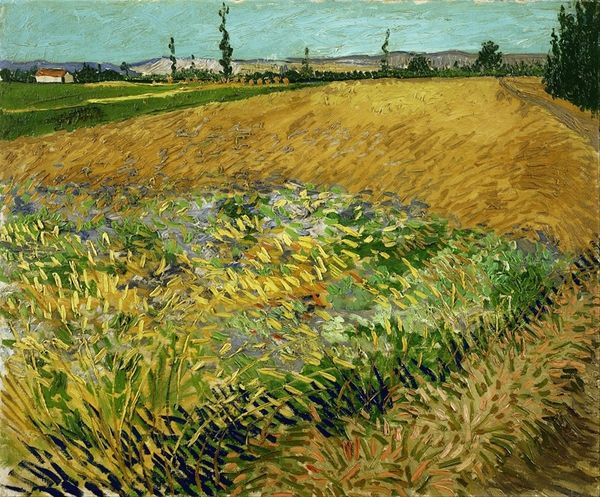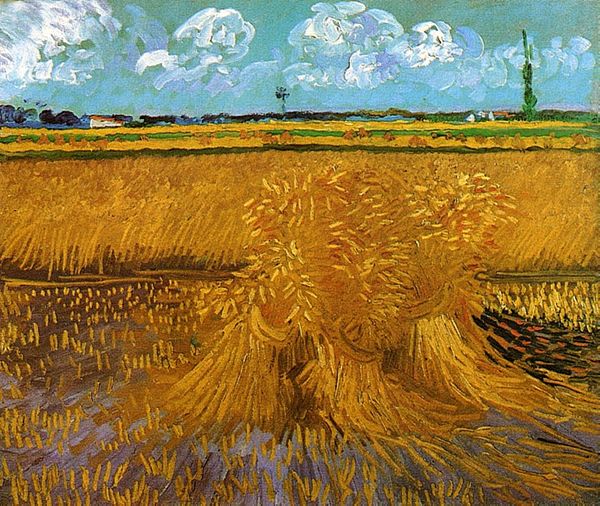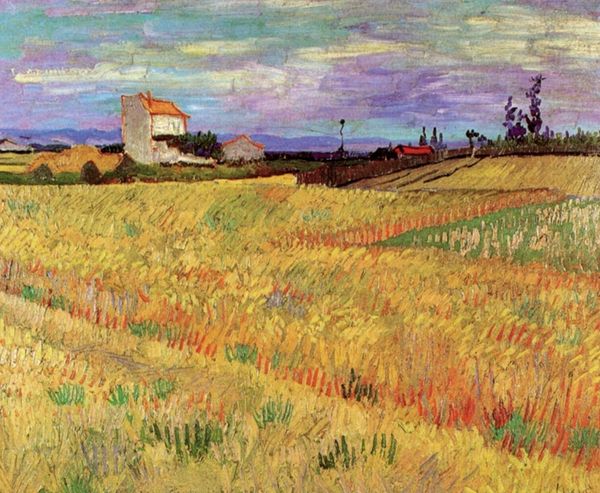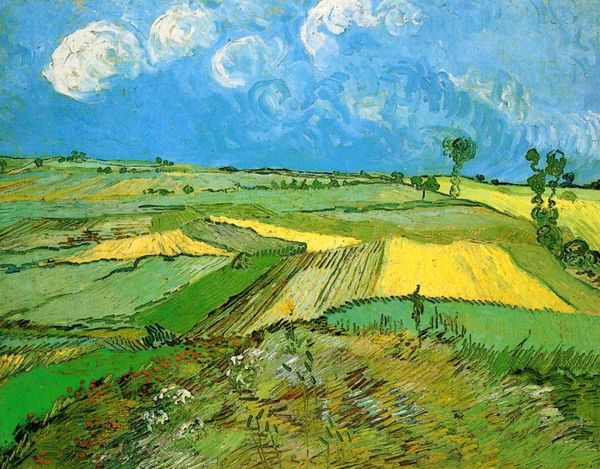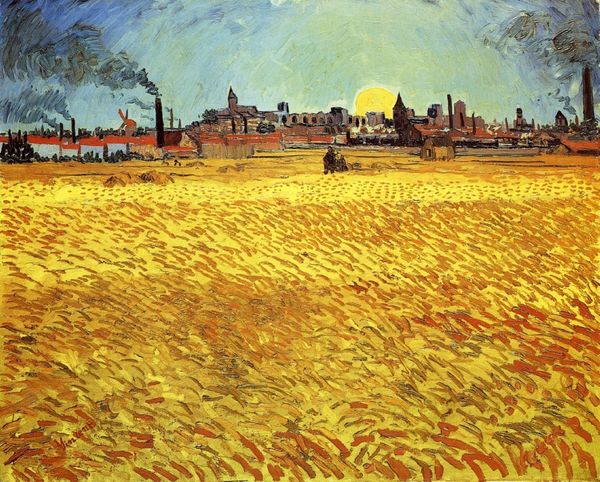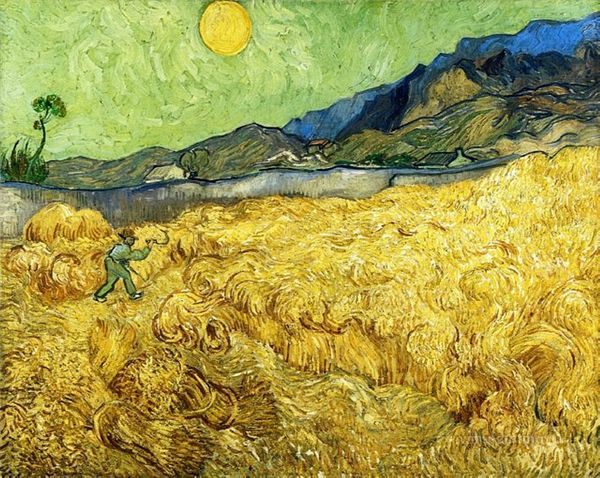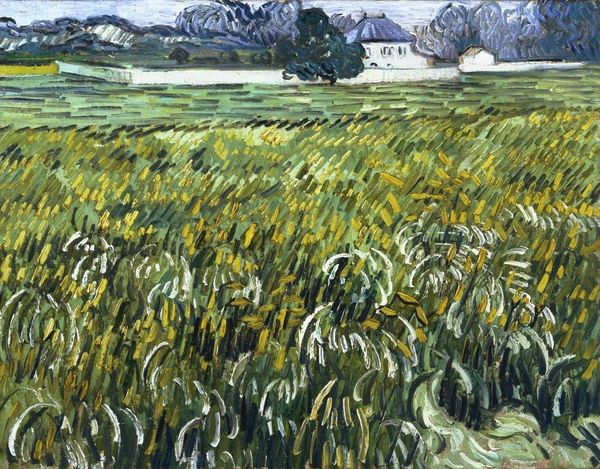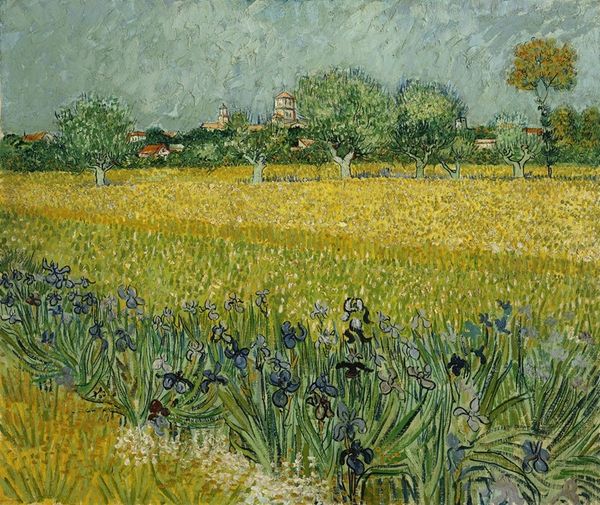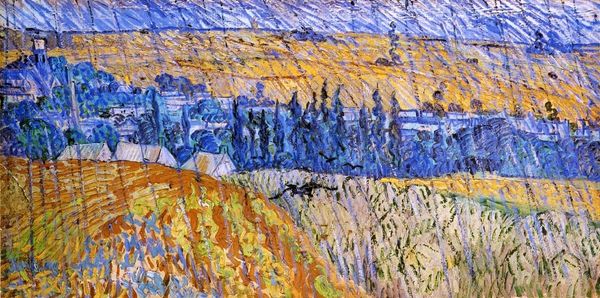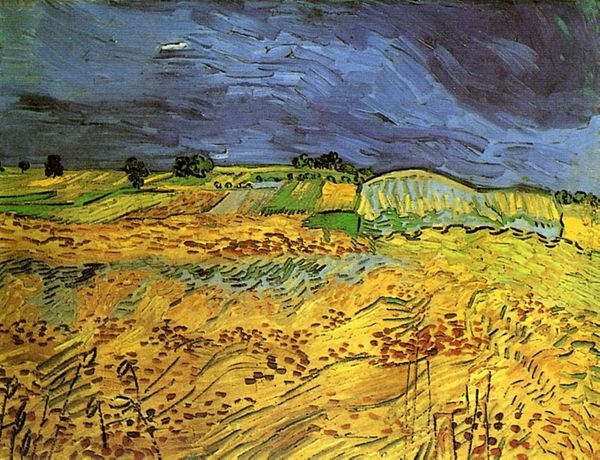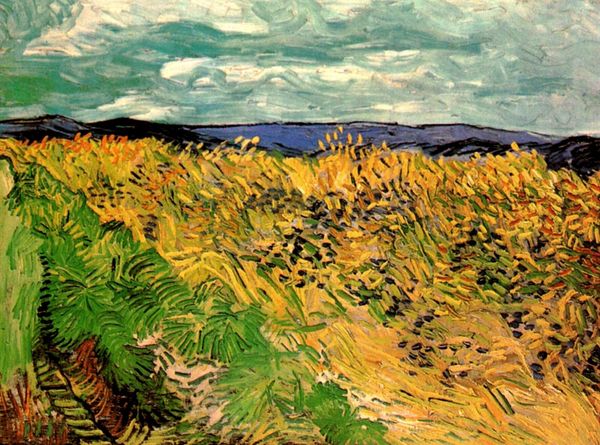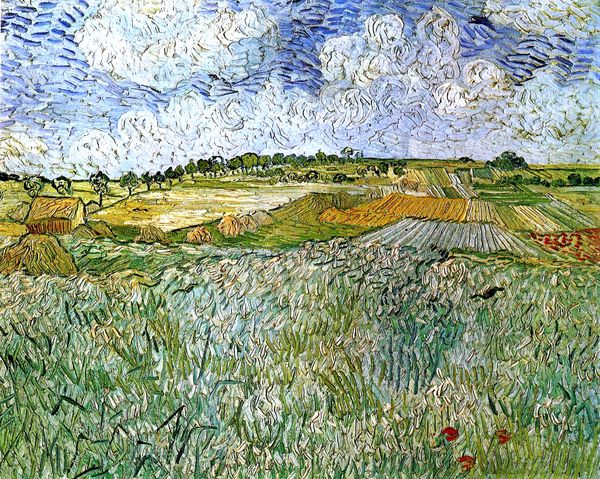
#
tropical
#
abstract expressionism
#
cliff
#
abstract painting
#
grass
#
flower
#
impressionist landscape
#
rock
#
fluid art
#
acrylic on canvas
#
plant
#
seascape
#
naive art
#
impressionist inspired
#
expressionist
Dimensions: 54 x 65 cm
Copyright: Public domain
Curator: Just look at those yellows and greens fighting for attention—it feels restless, doesn’t it? Like nature itself is about to burst forth. Editor: We're looking at Vincent van Gogh's "Wheat Field with the Alpilles Foothills in the Background," painted in 1888 while he was in Saint-Rémy. It's now part of the Van Gogh Museum’s collection in Amsterdam. I am fascinated by the materials used, how the materiality allows him to do such wonderful things. Curator: You’re right, the application is so thick and textured. Almost sculptural. I’m struck by the context. He’s grappling with mental health challenges here, isn’t he? How much does that struggle inform this explosive depiction? Editor: It's difficult not to view his work through the lens of his suffering. However, this was also a period of immense productivity. It shows how mental struggles, societal pressures and physical processes influence creativity and production of objects like these. Look at the deliberate use of impasto—he is not just depicting wheat; he's building it, physically layering paint to create tangible, almost aggressive texture. This is more than mere representation. It becomes about the act of creation itself, the labour of it, the raw physicality. Curator: I see the politics there too. There’s something so inherently democratic about finding beauty and significance in these ordinary landscapes. We cannot separate the subject, his lived experiences and political conditions, no? It raises questions about the romanticization of labor too. Editor: Absolutely, and perhaps it highlights the irony that even amidst the most painstaking labor—farming and then the meticulous, sometimes torturous act of painting itself—beauty and profound expression can emerge. It's a statement on the inherent value, perhaps even dignity, of such work. It speaks to his deep investment, his commitment and toil reflected in every dab. It transforms wheat field into more. Curator: Indeed, a field, yes, but a space for reflection, perhaps struggle. Van Gogh wrestled a narrative on identity and labour of creation—one that deserves the recognition it continues to get. Editor: Van Gogh transformed simple materials—paint, canvas, brushes—into much more, he provided the platform of contemplation on what it is to struggle, and yet create, allowing future audiences to grapple with difficult but fundamental issues.
Comments
No comments
Be the first to comment and join the conversation on the ultimate creative platform.
